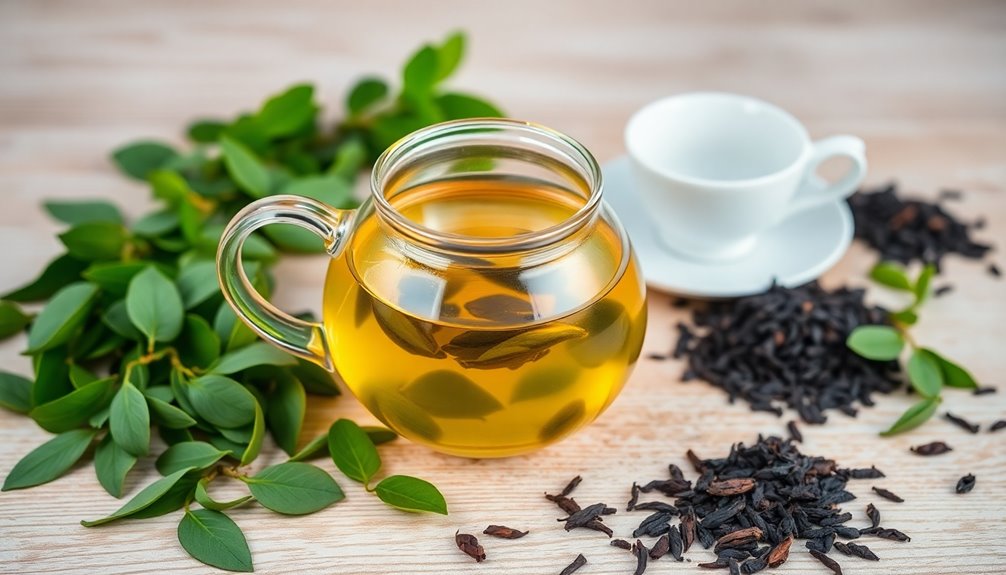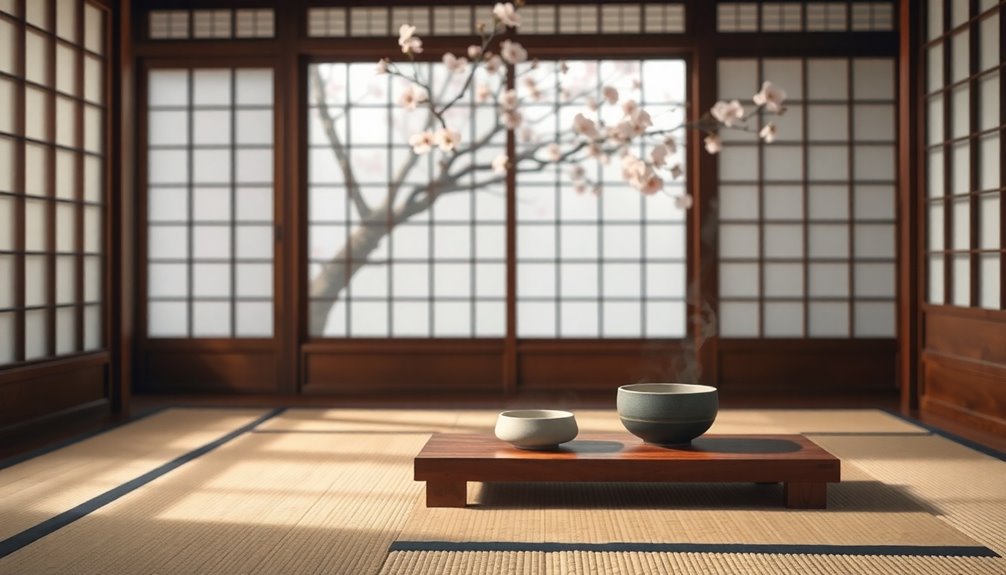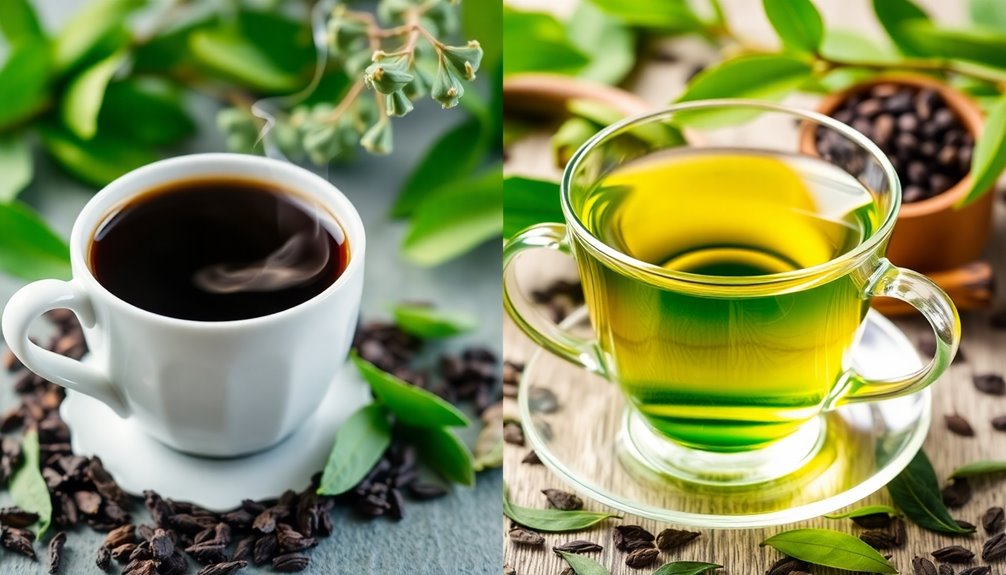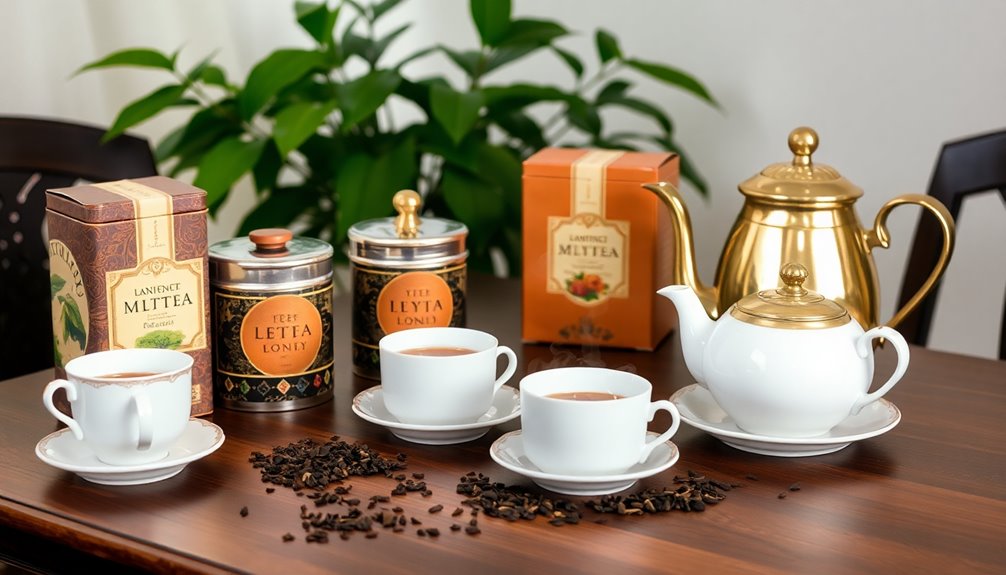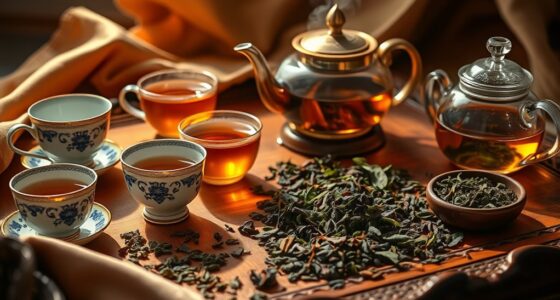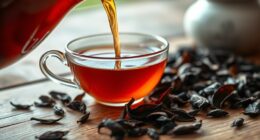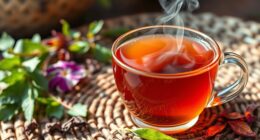Oolong tea is a delicious bridge between black and green teas, combining their best flavors and benefits. With oxidation levels ranging from 8% to 80%, it offers a wide taste experience, from light, floral notes to rich, earthy flavors. You can enjoy moderate caffeine content, providing a gentle boost. Oolong's complex flavor makes it unique, as you can steep it multiple times for different taste adventures. This tea also holds a special place in Taiwanese culture, emphasizing careful brewing methods. Curious about how to brew it yourself? There's so much more you can discover!
Key Takeaways
- Oolong tea is partially oxidized, ranging from 8% to 80%, placing it between green (unoxidized) and black (fully oxidized) teas.
- Its moderate caffeine content, 30-50 mg per 8 oz cup, offers an energy boost similar to black tea but less than coffee.
- The flavor profile varies widely, from sweet floral notes in lightly oxidized varieties to rich, earthy flavors in heavily oxidized types.
- Oolong's unique characteristics allow for multiple infusions, enhancing the complexity of flavors over time, unlike most green and black teas.
- The cultural significance of oolong in Taiwan highlights its importance, with traditional brewing methods bridging the gap between green and black tea rituals.
Introduction
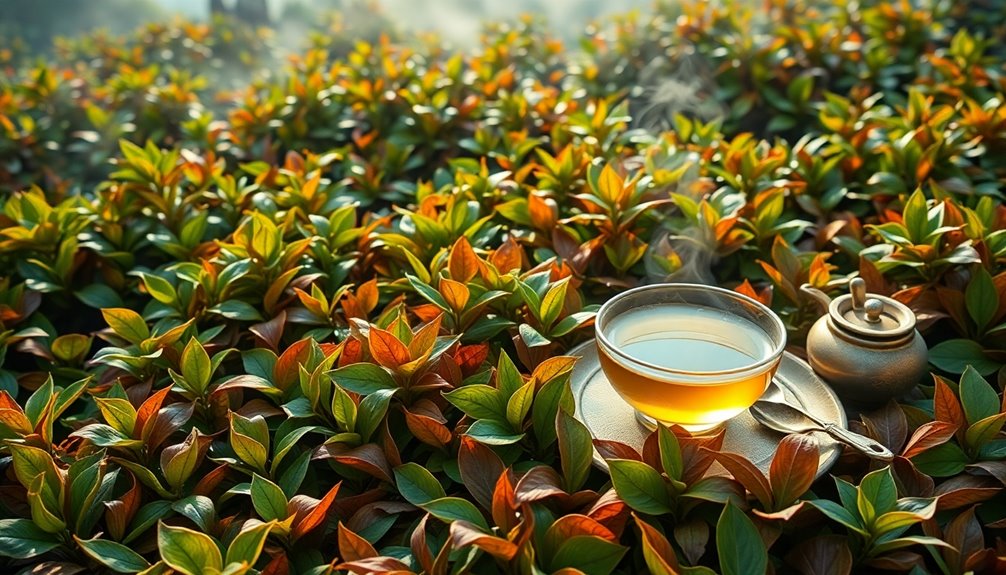
Oolong tea, with its intriguing balance between green and black varieties, offers a unique taste experience that's hard to match. This tea type comes from the Camellia sinensis plant and is famous for its special oxidation process. Depending on how it's made, oolong can be anywhere from 8% to 80% oxidized. This means you can enjoy a wide range of flavor and aroma, from light and floral to deep and earthy.
You might love oolong for its moderate caffeine content, which usually ranges from 30-50 mg per 8 oz cup. This makes it a great choice if you're sensitive to caffeine but still want a little boost.
Plus, oolong tea isn't just tasty; it's packed with health benefits too! Drinking it regularly may help with weight loss and improve heart health, thanks to its high levels of antioxidants and fluoride.
Tea Oxidation Levels Explained
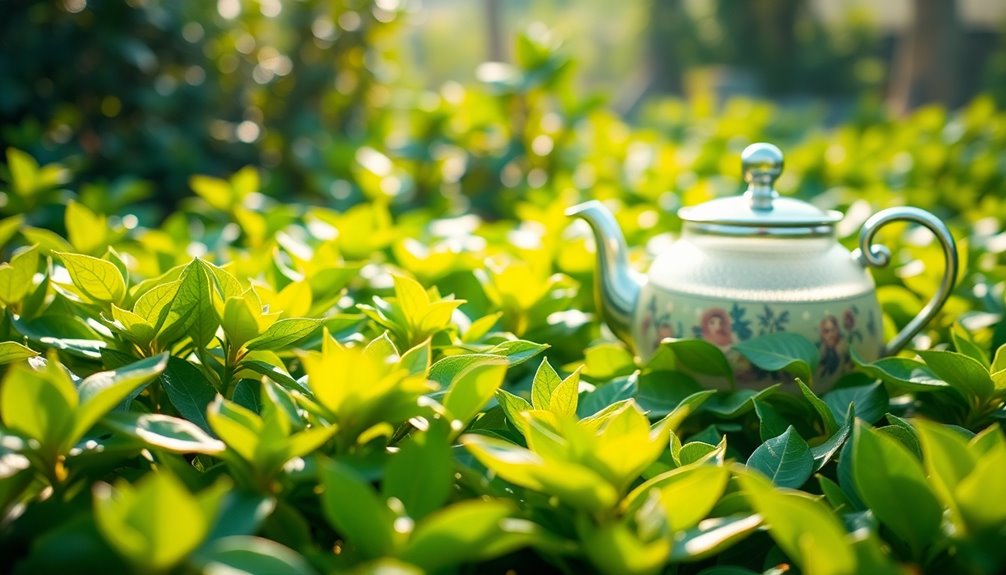
The oxidation process plays a significant role in defining the characteristics of various teas, including oolong. When you brew tea, the leaves interact with oxygen, changing their color, flavor, and aroma.
Oolong tea leaves are special because they undergo partial oxidation, typically ranging from 15% to 80%. This places oolong between green tea, which isn't oxidized at all, and black tea, which is fully oxidized.
The degree of oxidation directly affects the tea's final taste. If the leaves are lightly oxidized, you'll enjoy lighter, floral notes. However, if they're more fully oxidized, you'll experience richer, bolder flavors.
Oolong tea's unique oxidation process not only adds to its flavor complexity but also allows for multiple infusions. Each steep brings out different tastes, making it an exciting choice for tea lovers.
Additionally, oolong tea often has more caffeine than green tea, so it can give you a nice boost. Understanding these oxidation levels helps you appreciate the high-quality oolong and how it stands between other tea types.
Flavor Profile Complexity
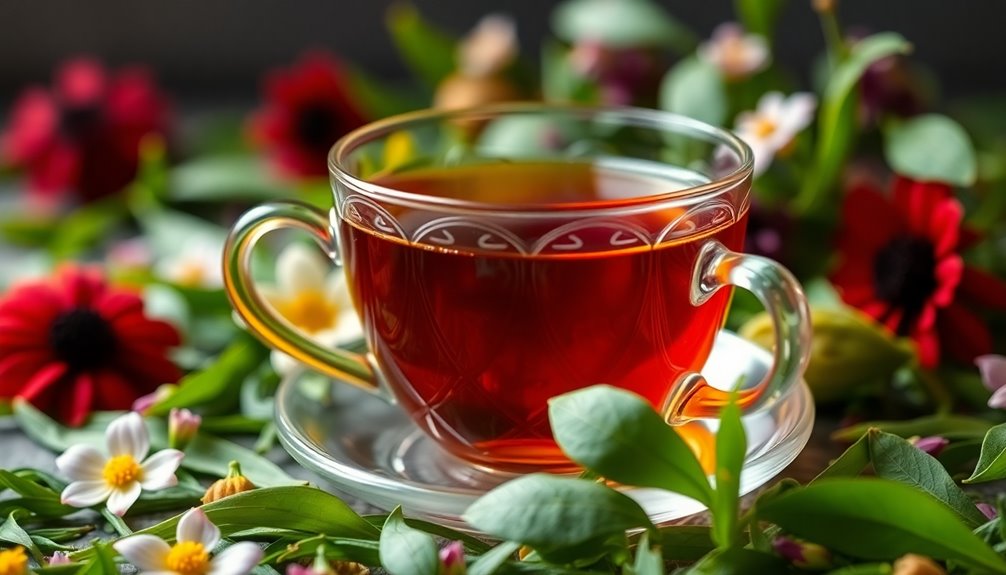
With a stunning range of oxidation levels, oolong tea offers an impressive flavor profile that captivates tea enthusiasts. The oxidation levels of oolong leaves can vary from 8% to 80%, leading to a delightful spectrum of flavors.
If you enjoy sweet, floral notes, you'll love lightly oxidized oolongs, which often have melon-like flavors. On the other hand, if you prefer something richer, heavily oxidized varieties deliver earthy tastes reminiscent of dark chocolate.
The steeping time plays a crucial role in this flavor complexity. A longer steep can enhance the depth and intensity of the tea, bringing out hidden notes you might miss with a quick infusion.
Popular oolong varieties, like Tie Guan Yin and Da Hong Pao, showcase these distinct characteristics beautifully. Tie Guan Yin delights with its floral aroma, while Da Hong Pao impresses with its robust, roasted profile.
Exploring oolong tea is like a flavorful adventure, bridging the gap between the grassy notes of green tea and the bold richness of black tea.
Cultural Significance in Taiwan

Tea lovers often find themselves enchanted not just by the flavors of oolong but also by its cultural roots, especially in Taiwan. Here, oolong tea is more than just a drink; it embodies a rich tea culture that highlights hospitality and respect. During festivals and tea ceremonies, people brew high-quality oolong, showcasing its unique qualities through precise techniques.
In Taiwan, the famous "Gongfu" tea ceremony is a cherished practice. This method emphasizes careful brewing to bring out the best flavors and aromas of oolong. Varieties like Ali Shan and Dong Ding are particularly renowned for their exquisite taste, thanks to the careful oxidation process they undergo.
Taiwan's oolong tea production accounts for about 20% of the global market, making it significant both locally and internationally. The Taiwanese government even promotes oolong as a cultural heritage, stressing its historical importance to Taiwan's identity and economy.
Whether you prefer black or green tea, diving into the world of oolong in Taiwan offers a delicious glimpse into a vibrant culture, rich traditions, and a deep appreciation for this special beverage.
Production Environmental Impact
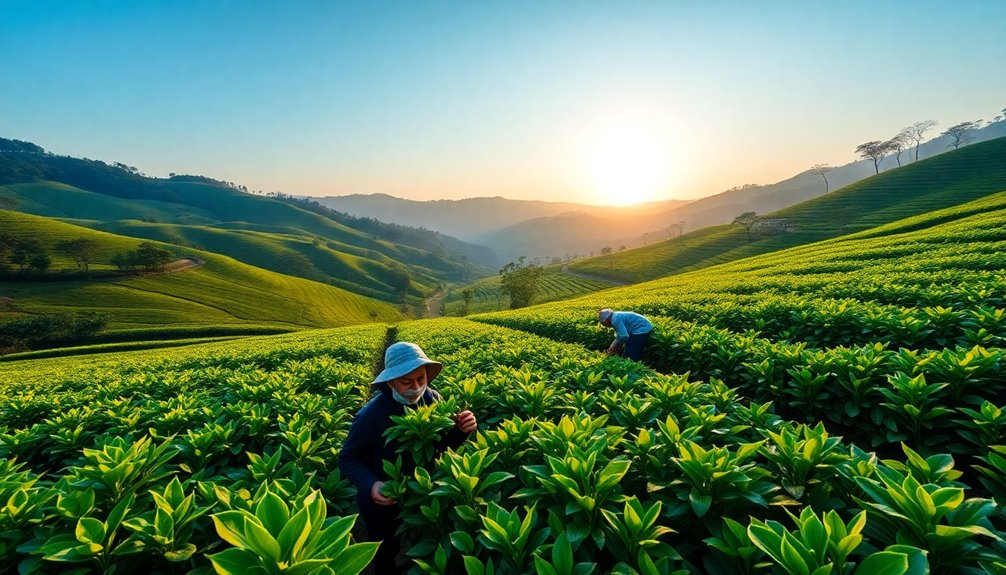
Oolong tea production carries significant environmental implications, reflecting both sustainable practices and challenges. This unique tea, which is least processed compared to green and black tea, begins its journey when oxidation starts. As you enjoy a cup, you might appreciate the growing methods used for the tea, as they can impact the environment.
Many oolong tea plantations adopt organic farming methods. These methods help reduce the use of chemical pesticides and fertilizers, promoting healthier soil and cleaner ecosystems. Additionally, tea is grown in ways that support biodiversity, allowing various plants and animals to thrive together.
Since oolong tea typically requires less water than other crops, it's a sustainable choice, especially in water-scarce areas. However, production can generate waste. Thankfully, more tea producers are embracing composting and recycling to lessen their impact.
In places like Taiwan, oolong tea cultivation often connects to conservation programs. These efforts protect natural habitats while boosting local economies through eco-tourism and sustainable practices. So, when you sip your oolong, you can feel good knowing it supports both your health with its low caffeine and the planet!
Practical Applications
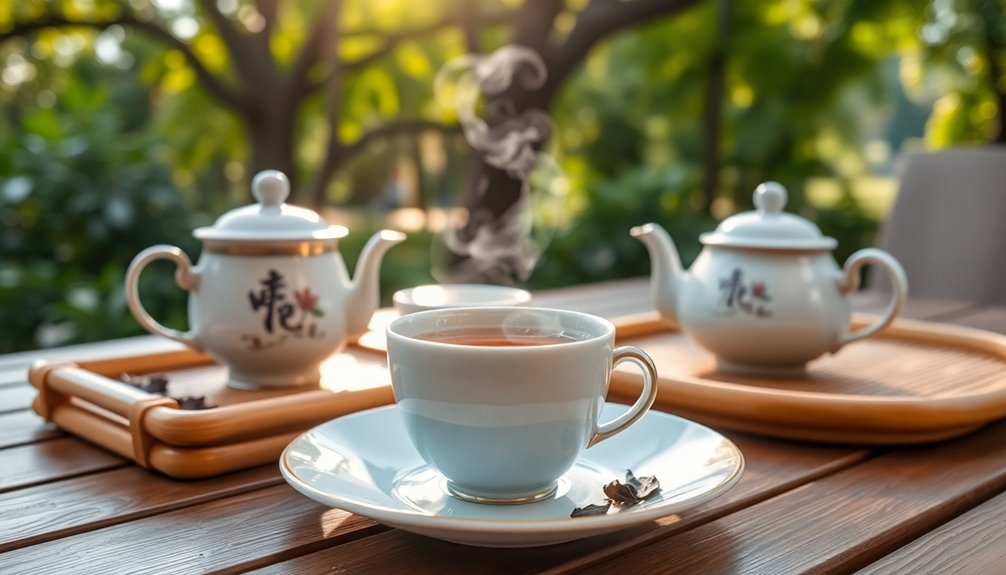
While exploring the world of oolong tea, you'll discover its practical applications extend beyond mere enjoyment in a cup. Oolong tea sits beautifully between black and green teas, thanks to its varying levels of oxidation, which can range from 8% to 80%. This means you can find the best flavor for your taste buds!
The leaves are plucked, rolled and crushed, and then brewed in a pot at temperatures between 190°F to 200°F. Steep them for 3-5 minutes to unlock their unique flavors.
One of the most exciting features of oolong tea is its ability to be re-steeped multiple times. Each infusion reveals new notes, from floral to sweet and fruity, especially in popular varieties like Tie Guan Yin and Oriental Beauty.
Beyond taste, regular consumption of oolong tea may help with weight management, improve metabolism, and even reduce cholesterol levels. For those concerned about high blood pressure, oolong can be a beneficial choice.
Frequently Asked Questions
Is Oolong Between Green and Black Tea?
Yes, oolong tea sits between green and black tea. It features a unique oxidation level, offering a blend of flavors and characteristics from both types, making it a versatile choice for tea enthusiasts like you.
What Tea Is Considered in Between Green and Black Tea Called?
The tea considered between green and black is oolong. It's uniquely processed, offering a fascinating combination of flavors and aromas. If you enjoy both, oolong's diverse profile might just be perfect for you!
Which Is Healthier Black Tea or Oolong Tea?
When comparing black tea and oolong tea, oolong's unique properties might give it an edge for weight management and heart health. Both have benefits, but oolong's balance could suit your health needs better.
What Is the Difference Between White Black Green and Oolong Tea?
White tea's delicate and minimally processed, while green tea's fresh and unoxidized. Black tea's fully oxidized for a bold flavor, and oolong's partially oxidized, offering a unique taste between green and black. Enjoy exploring!
Conclusion
Oolong tea is a delightful choice that sits perfectly between black and green tea. Its unique flavors and rich history, especially in Taiwan, make it special. By understanding how it's made and its environmental impact, you can enjoy it even more. So, whether you're sipping it for fun or exploring its cultural roots, you're in for a treat. Give oolong a try, and discover why it's such a beloved beverage around the world!

